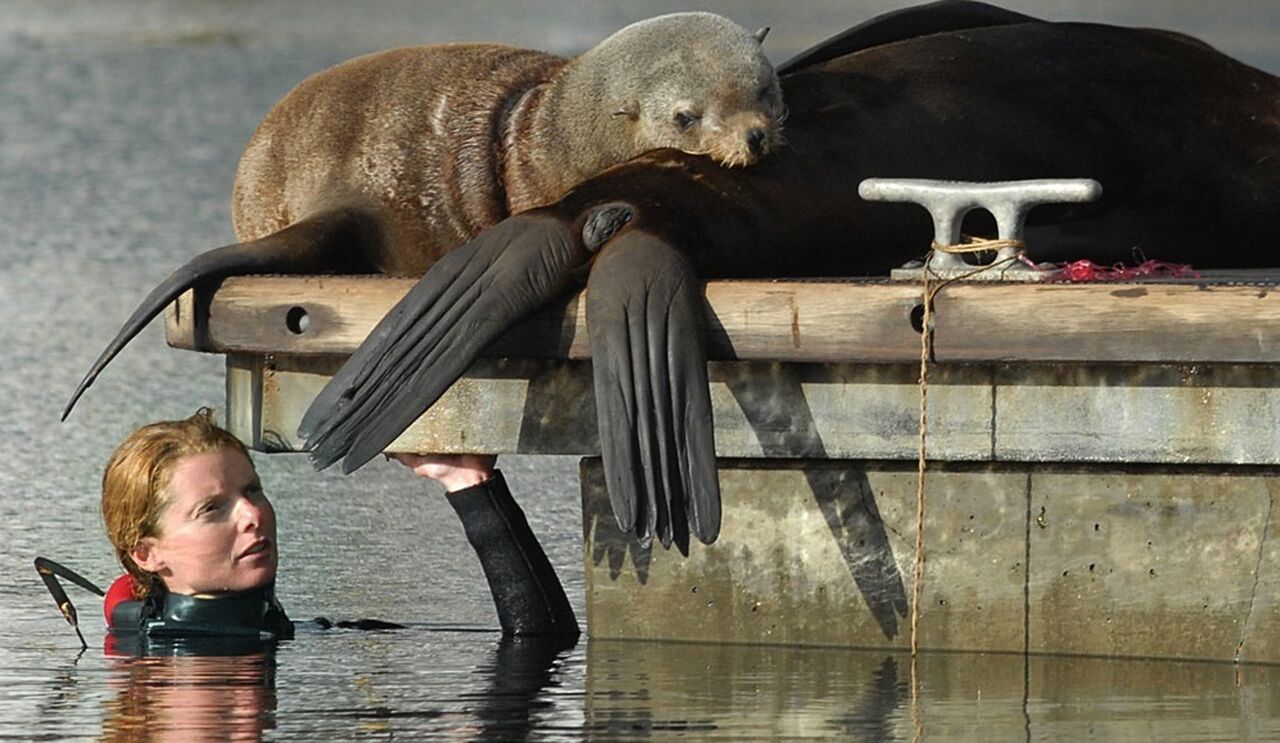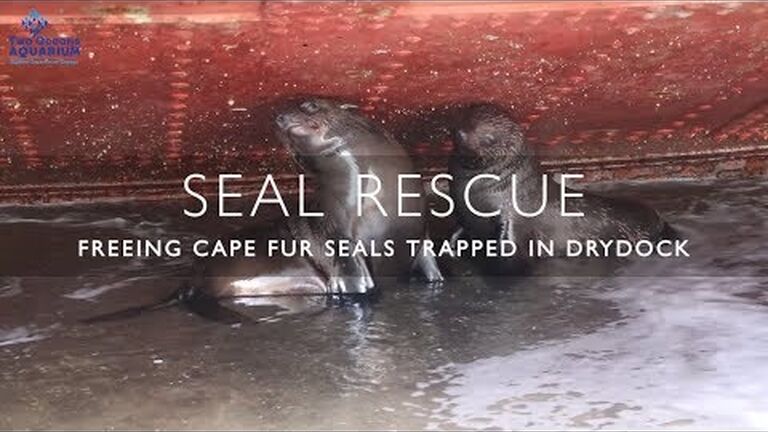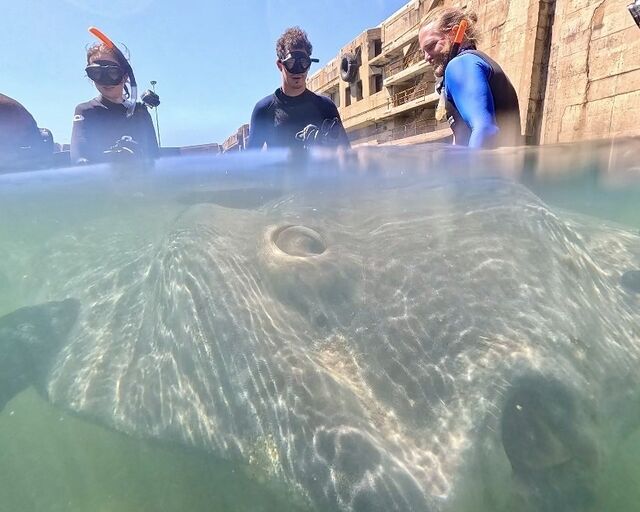The Two Oceans Aquarium is located on the V&A Waterfront, which is a leisure and commercial property situated in the heart of a working harbour. The harbour is home to a diverse range of wildlife from marine and terrestrial birds, to seals, otters and on occasion, also visited by other marine mammals, such as dolphins. The Cape fur seals (Arctocephalus pusillus pusillus) that live in the harbour and around the jetties of the Waterfront, are endemic to the southern coast of Africa, ranging from Algoa Bay to northern Namibia, with their population numbers estimated at around two million. They feed mostly on fish, and are the most muscular members of the fur seal family. Despite their incredible natural abilities, Cape fur seals struggle to overcome the challenges of living side-by-side with humans in urban coastal environments.
Why rescue seals in the V&A Waterfront and Cape Town harbour?
The seals that haul out in the Port of Cape Town and the V&A Waterfront are predominantly males with very few females ever making their way into the harbour area. Seals are very curious and playful, which sometimes gets them into trouble while spending time in a working harbour. They are entangled in the discarded litter, fishing line, box bands and even items of clothing. And, as it is a working harbour, there are also human-animal interactions that require mediation. The seals also get trapped in the various operating dry docks from time to time.
Lending a helping hand to seals
For many years, various government departments were charged with assisting the seals that got entangled or trapped in the harbour. Assistance was rendered mostly through catching the seals with a net, and as one can imagine, this process was often not only long and stressful for both the humans and animals involved, but also often not practical.
Seal entanglements and animals being trapped in dry docks have increased as activities within the V&A Waterfront and the harbour continue to expand. Visitors to the Waterfront are also more aware of the issue of plastic pollution and are more likely to report sightings of entangled seals to the Two Oceans Aquarium. As such, the Marine Wildlife Management Programme (MWMP) has been implemented, a collaborative effort between the V&A Waterfront, Two Oceans Aquarium and Two Oceans Aquarium Foundation involving staff vigilantly and actively patrolling the harbour, looking out for seals in trouble.
Wildlife monitors
The V&A Waterfront is a hive of human and animal activity, which can sometimes lead to undesirable interactions. To mitigate and monitor human and animal interactions within the Waterfront, the Marine Wildlife Management Programme was established in 2017. Brett Glasby, Ayanda Cimani and Kwanele Mantanga make up the dynamic team that spends hours patrolling the kilometres of jetties and walkways of the V&A Waterfront, to identify animals in need of assistance or rescue, and also to mitigate human-wildlife interactions. The team visits the various known areas where seals haul out, checking on each animal, and ensuring that there are no entanglements or entrapments.
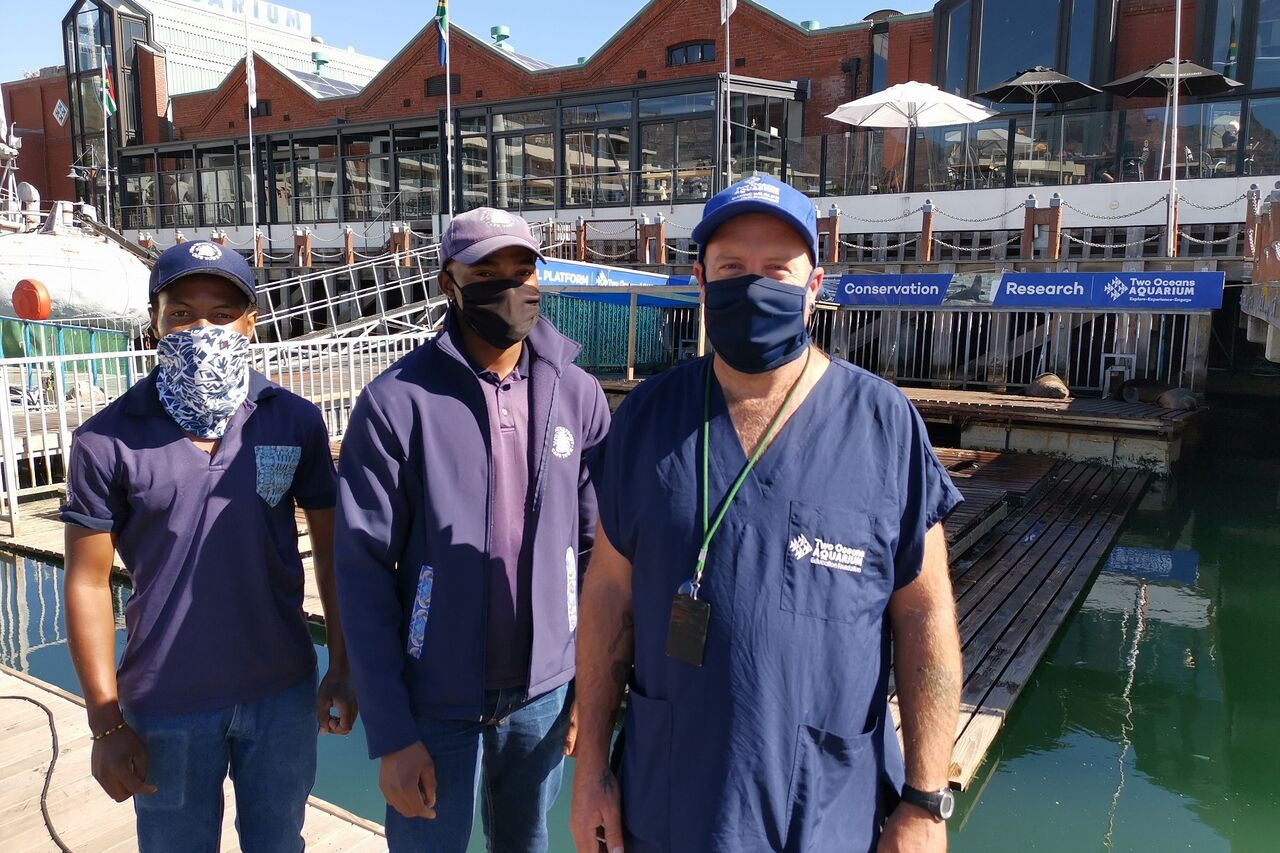
In many cases this team is first on the scene and can access the situation. They can act quickly if an animal is positioned in such a way that they can get to it and can cut the noose. If this is not the case, they call in backup from rescuers who can don a wetsuit and approach the entangled animal from the water. (More about this later). However, sometimes it can take months of monitoring a single animal before the right opportunity arises. Sometimes this opportunity unfortunately never comes as the seal disappears and its fate is unknown. This team plays a vital role in the Waterfront as they form the link between the humans making use of the Waterfront, and the animals that reside within this space.
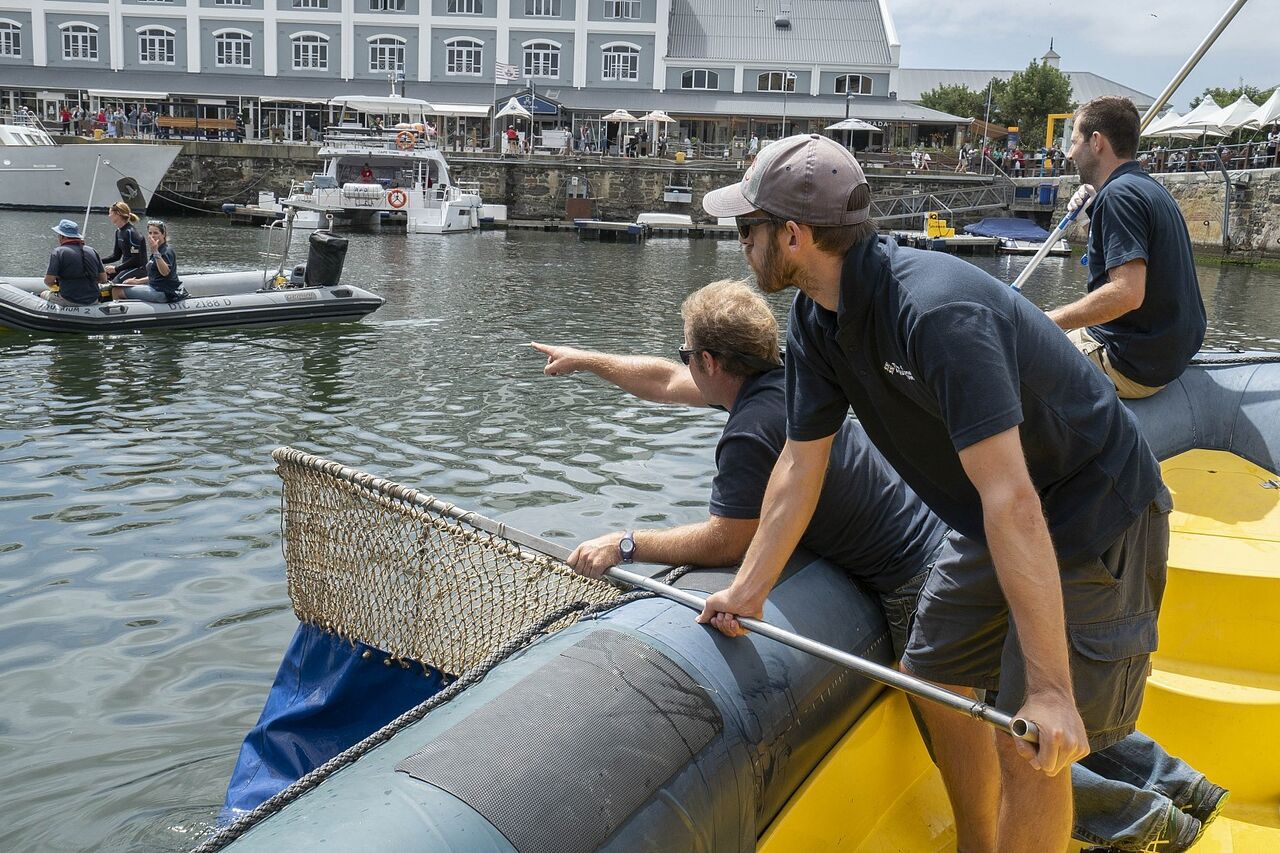
The seal team and specialist platform
The rich history behind the MWMP dates back to the early 2000s when Vincent Calder, who was working for the Two Oceans Aquarium at the time, was asked to assist the government department representatives with rescuing seals and cutting nooses from entangled animals. Vincent, being very resourceful, started devising different plans and equipment in an attempt to access the seals more easily and safely (for both parties), and to ensure more successful and less stressful rescues.
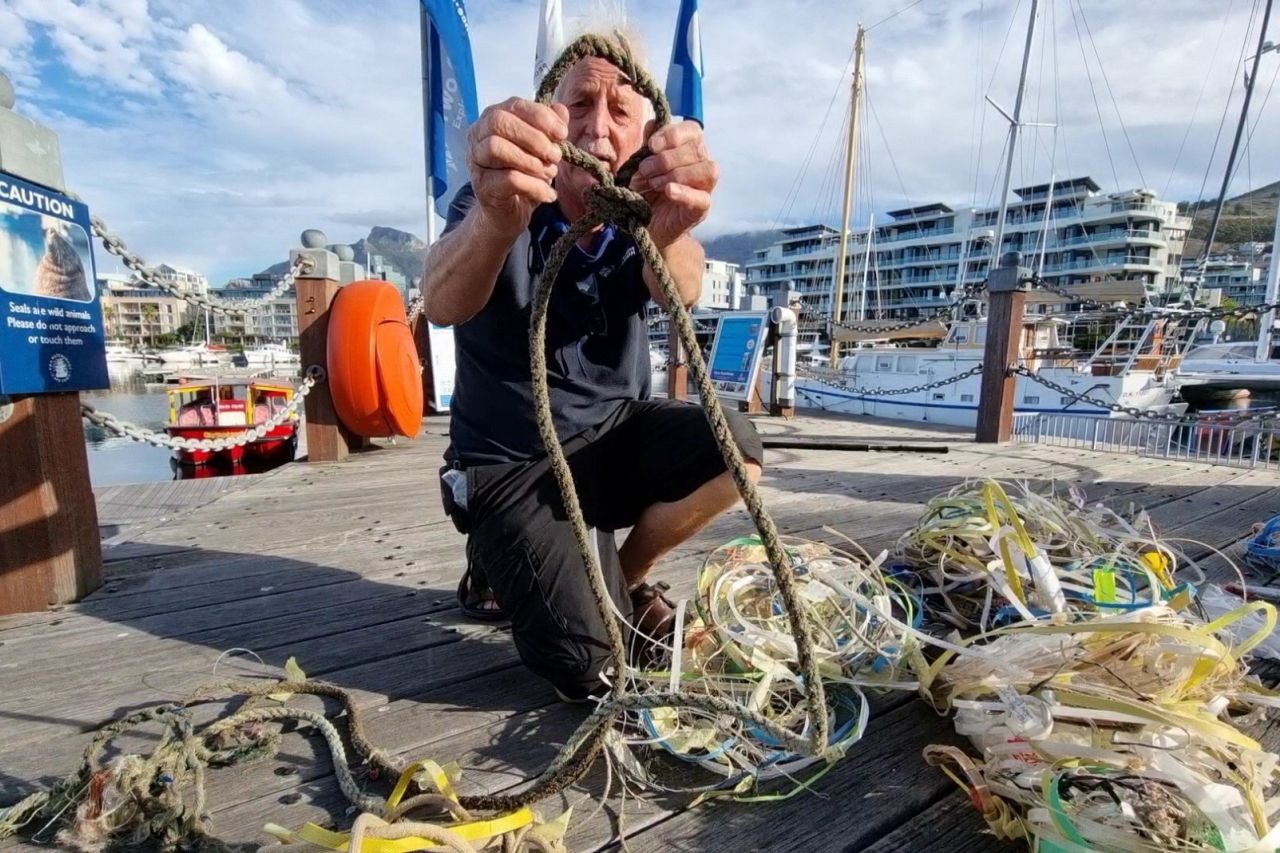
Vince was soon joined by Claire Taylor, one of the Curatorial staff members at the time. They started to sneak up on the seals from below the jetties, while the seals were resting above. They would slowly and quietly approach the sleeping animals, manoeuvre a cutter through the openings between the jetty slats, and then hook and cut the nooses off from the seals’ necks. It is this technique that is employed in cases where the wildlife monitors cannot get to an entanglement from above.
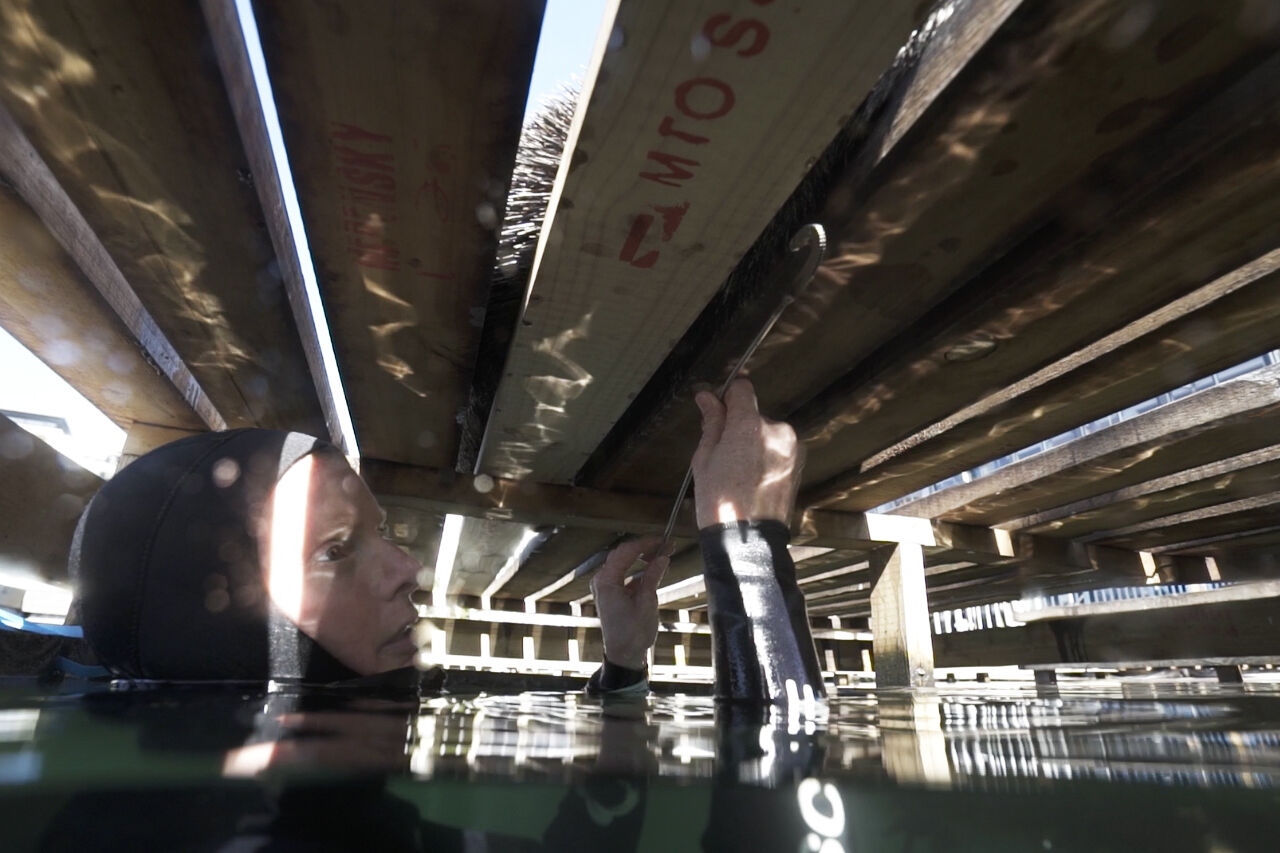
The seal platform situated in the basin next to the Aquarium is the ideal place where seals with raffia cord, box bands, fishing line and other entanglements can be assisted both from below the jetty and from above. The platform was first installed in 2010 and over the years, it has been adapted to attract more seals so that they spend time here rather than lying on the jetties or on the expensive boats in the basin. The platform is therefore not only an ideal place to assist seals in need of disentanglement, it also provides a space to lessen human-animal conflict by enticing the seals away from areas where they could cause damage or could come in contact with humans.
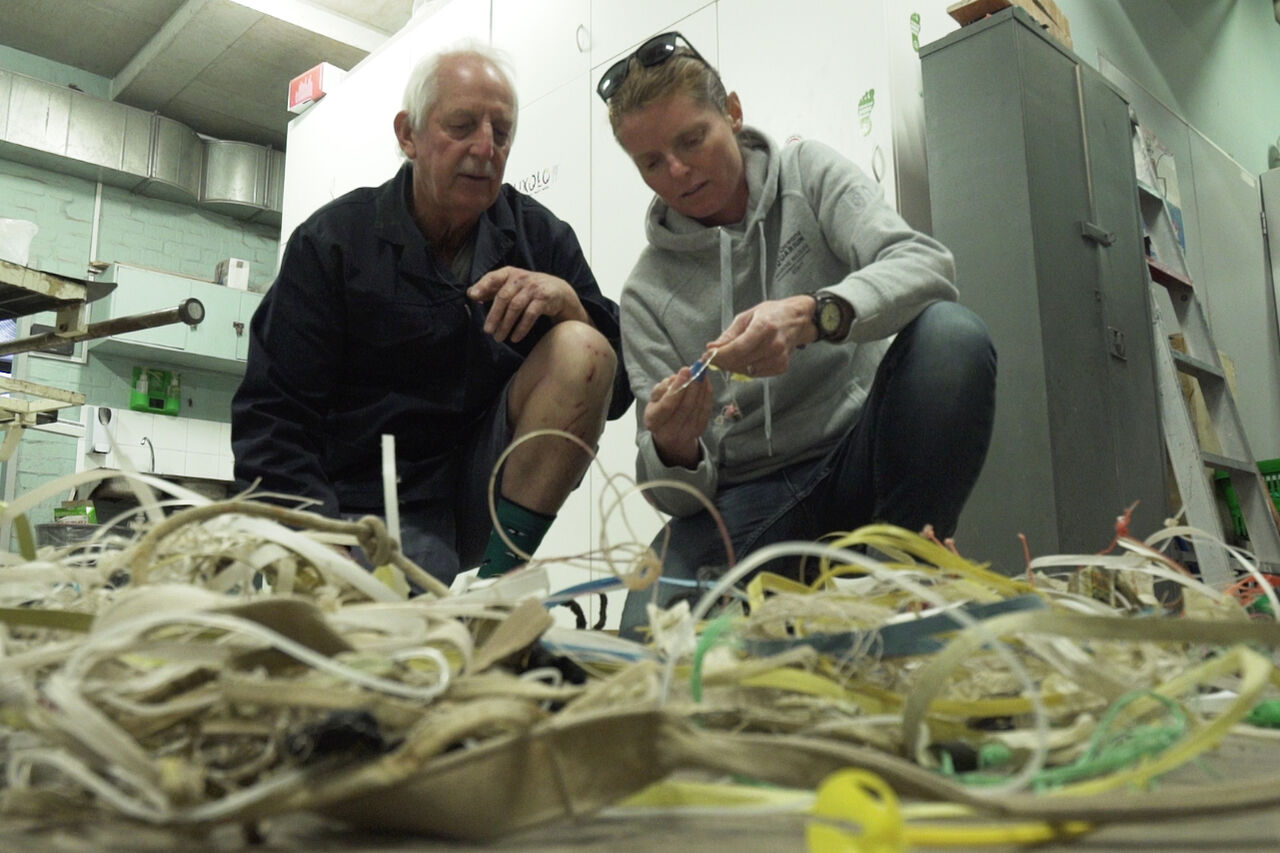
Rescues from dry docks
Through continued work with the seals, and the platform proving to be a great success, the Aquarium was granted a permit to undertake seal rescues and disentanglements within the greater Cape Town harbour in 2011. The cutting of the nooses is not the only area in which some of the seals in the harbour need assistance. Sometimes these animals get trapped in a dry dock and need to be physically removed to ensure their survival.
Harbours are constant hubs of shipping activity, and the Port of Cape Town is equipped with boat and ship repair facilities. In order for a multi-tonne ship to be repaired, it needs to be removed from the water. The easiest way of doing this is by navigating the ship into a water-filled dry dock, closing the dock up and pumping the remaining water out – leaving the ship high and dry, and ready for repairs. This method sometimes results in animals being trapped in the dock once the water has been drained. The Aquarium team has had to rescue many seals, and sunfish, that have found themselves stuck in drained docks.
Some of these rescues involve catching each seal, loading the animal into a large transport bag, and hoisting it out of the dry dock by crane. These rescues require a lot of manpower, and the cooperation of the very accommodating crane companies. Sometimes it is fairly easy to slowly but surely just herd the seals out of the dry dock by walking behind them and encouraging them to make their way up the stairs - keep in mind that these docks are easily five storeys deep! That is a lot of stairs for both animal and human to climb, so patience and persistence is needed. In December 2020 a massive rescue of 28 seals, trapped in the Duncan dry dock across from the Aquarium, employed both the above methods. On the first day, the seals were individually caught and lifted out of the dock by a crane, but this was stressful and with the summer heat, not an ideal situation. The next day, the rest of the group was slowly herded up the stairs, out of the dock and back into the harbour, to swim free.
Unique rescues
After working with the harbour seals for so many years, Claire Taylor has built up an excellent knowledge of their behaviour and reactions to certain stimuli. This has enabled her to “read” their body language and to predict their next moves, which in turn has given her the unique opportunity to develop her own method of catching smaller seals. Claire literally sneaks up on the unsuspecting animal and quickly grabs it, carrying it in a well-practised grip so that it cannot injure her or itself. It takes years and years of constant practise and dedication to get to the point where one can be so comfortable in the presence of wild animals, that you are able to do this. Please never approach a seal yourself. Leave this to the professionals.
Some seals are just too difficult to access, or the entanglements are just too severe to easily cut off. For these special cases, a darting technique has been developed. Darting seals is not as easy as it might seem. Once darted, seals tend to jump into the water. This can result in them drowning. Working collaboratively with international experts, we have been able to refine the darting process according to Cape fur seal behaviour, metabolism and the areas where they are found. This significant study and associated research have recently been published and shows just how innovative those working with the seals in the harbour and the Waterfront, have to be in order for them to effectively help these animals.
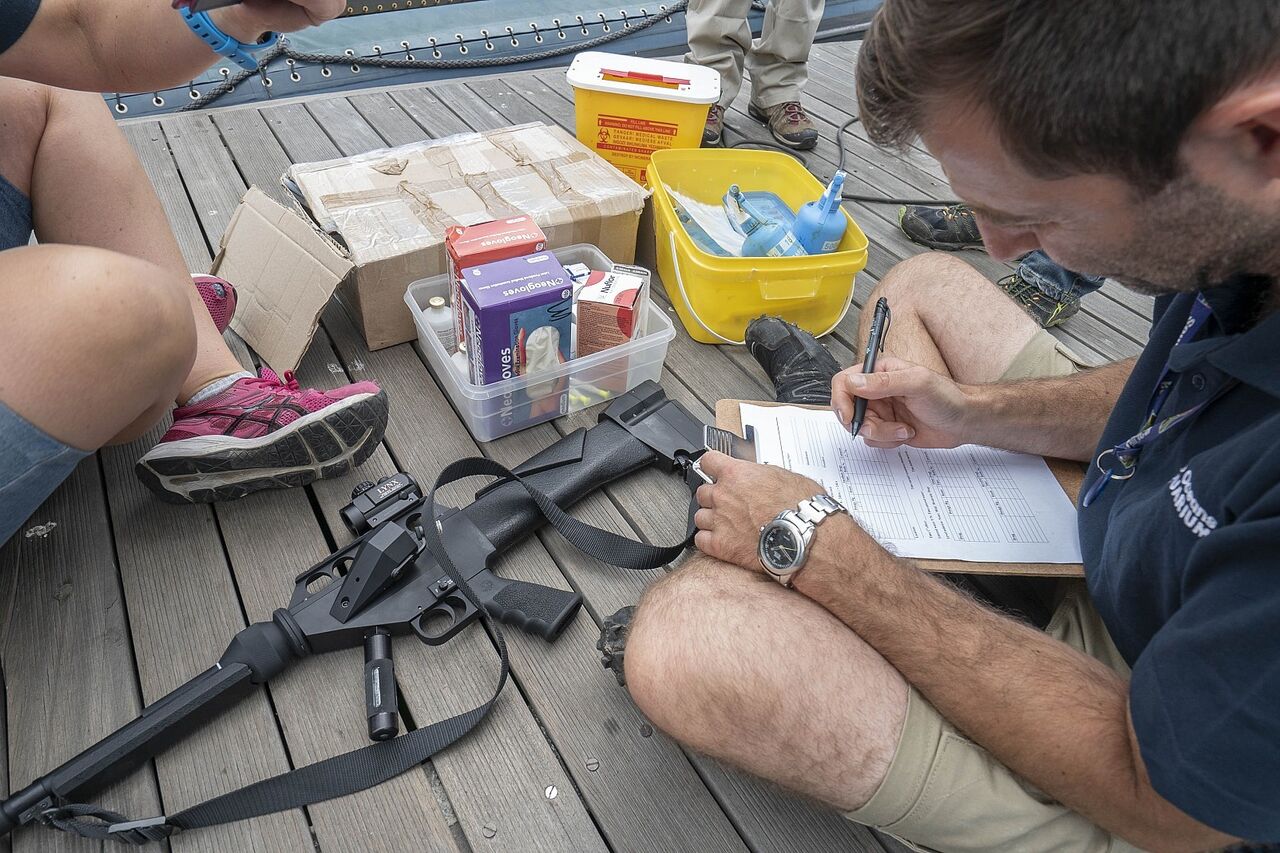
What can you do to help when you are in the V&A Waterfront?
If you are visiting the V&A Waterfront and see a seal, or any other animal, that is in need of assistance, please call the Aquarium on +27 21 418 3823 and report the sighting. The Wildlife Monitors are based at the Aquarium, so they will be able to go and assess the situation. Do not try and assist the seal yourself. Always remember that they are wild animals and should be treated as such.
How you can help when you are at home or at work?
Even if you are not visiting the Waterfront, you can help. It is easy to think that the loops that end up around the seals’ necks only come from the various activities in the harbour. This is, however, an incorrect assumption. Huge amounts of trash enter the harbour via the stormwater drain system. This system is filled with litter and rubbish that originates from land and is then carried through to the sea and the harbour - box bands, handles of plastic shopping bags and even the plastic waistbands of discarded clothing, all have been responsible for injuring our harbour seals.
Whatever we do on land affects the ocean and therefore the seals. The quickest and easiest way to prevent the seals from becoming entangled is to just cut the nooses in the rubbish that you recycle or throw in the bin. This applies to every single loop that goes into your rubbish or recycling bin so it doesn’t matter what the size, cut the loop. The second way you can help is by not littering - be responsible for your rubbish and ensure that it is either recycled or disposed of properly.
You can also donate to the conservation work of the Two Oceans Aquarium Foundation, the NPO/PBO partner of the Aquarium.
Lastly, tell people about what is happening in the ocean. Share the rescue and disentanglement information and videos with others and let them know how that by cutting a loop, they can help save a life.
Teamwork definitely makes the dream work when it comes to seal rescues in the Waterfront and Cape Town Harbour. From the people (like you) who report animals in distress, the crane drivers, dry dock workers, the Wildlife Monitors, the seal team, and vets, everyone has a role to play to ensure that the seals are looked after. Thank you to each and everyone involved.
